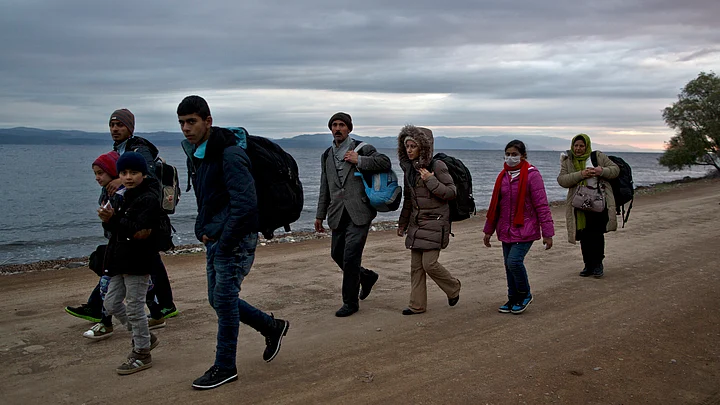One million, and counting. The International Organisation for Migration (IOM) says its statistics show the number of people fleeing conflict or poverty who have arrived in the European Union by sea this year has hit the seven-digit mark.
Despite increased coast-guard patrols, razor-wire topped fences, tightened security, the reintroduction of border controls, new laws and refugee distribution schemes, nothing has slowed down the arrivals.
More than two years after the drowning of over 400 people off Italy’s southern coast brought cries of “never again,” every record has been broken in 2015. The IOM says the total number of arrivals is more than four times that of last year.
Here are some questions and answers about how the EU is handling the crisis:
Where Are They Coming From?
About half of the people entering Europe in 2015 were Syrians, while 20 percent were Afghans and 7 percent Iraqis, the IOM said.
How Are They Getting To Europe?
Most people arriving in Europe are now entering Greece after taking short trips on rickety boats or inflatable rafts from Turkey.
The IOM says more than 820,000 came that way in 2015, many fleeing wars in Syria and Iraq. More than 150,000 have crossed the Mediterranean to Italy this year, mostly from the Libyan coast.
Nearly 3,700 are dead or missing, mostly along those two routes. As winter closes in, the colder weather appears to have slowed the flow somewhat, although this is unlikely to last long.
Where Are They Heading?
Most who come via Greece travel by foot and on trains, buses and trucks through central Europe, en route to the more prosperous countries of western Europe. Germany has taken in hundreds of thousands of people this year, even Sweden has been welcoming.
What Has Been Done?
The EU has beefed up the Frontex Border Agency and launched a naval operation to hunt human traffickers. To ease the number of arrivals and prevent dangerous journeys across the sea, EU nations agreed to resettle some refugees by bringing them directly from countries outside Europe.
EU teams were sent to Greece and Italy to fast-track migrant registration and sort out whether those arriving should qualify for international protection or be sent home.
Twenty-three nations also agreed to share 160,000 refugees in Greece and Italy to lighten the two countries’ burden. The EU is also investing funds, assistance and assets in Turkey and countries neighbouring Libya that migrants leave or travel across to get to Europe.
Then How Did It Get So Bad?
Europe has been overwhelmed by the sheer numbers of the migrants and the response has been slow. The EU initially tried to respond with policy changes and refused to treat the continent’s biggest refugee crisis since World War II as a humanitarian emergency.
Border guards and reception facilities were swamped. As the control of Europe’s external borders broke down, countries desperate to halt the influx took unilateral measures that undermined confidence and trust, mainly closing borders without informing their neighbours, causing chaos as people looked for alternate routes.
Being unable to handle the migrant influx, EU urged other European countries to share the burden of housing 160,000 warning that Greece, Italy and Hungary could no longer handle the influx alone. But three months into its implementation, around mid-December just over 200 people had moved to other countries. Moreover, of the people whose asylum or residency applications have been turned down, just over one in three are actually sent home.
What’s More In The Pipeline?
In an effort to control the inflow, the EU will give Turkey three billion euros to cope with Syrian refugees and ease visa restrictions for Turkish nationals. It has already sped up Ankara’s membership process. In exchange, Turkey is to crack down on migrants leaving for Greece.
To gain control of the Turkey-Greece maritime border, the EU will look to endorse a European border and coast guard before July. The new agency will monitor external borders and intervene when countries are unable or unwilling to respond to big migrant movements.
In March, the EU’s executive arm will introduce ‘smart borders’ policies to control entry and exit, better register travellers and change the rules governing the Schengen passport-free zone that allows people to travel without border checks or visas through many countries in Europe.
(At The Quint, we question everything. Play an active role in shaping our journalism by becoming a member today.)
